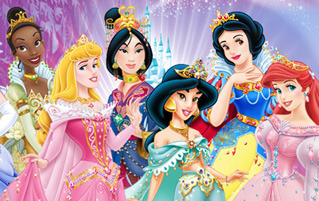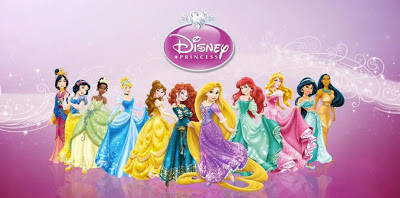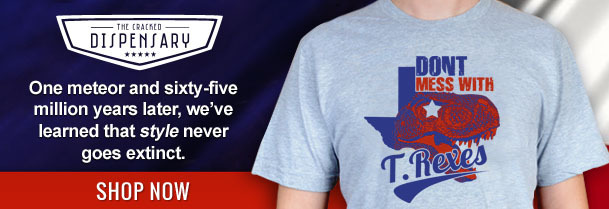4 Ways the Disney Princesses Created Modern Feminism


After a year when everyone from Nicki Minaj to science toys cloaked themselves in the warm, motherly folds of feminism -- when A-list starlets like Divergent Girl and Katy Perry distanced themselves from the "F" word, and when TIME magazine got so sick of the label that they flirted with putting the word on the naughty list -- I think it's safe to say "feminism" is having a moment.

And then Beyonce stole that moment, as she steals all moments. Now and forever.
And the hubbub that kickstarted the pro-girl talk this year was Frozen, the Disney cartoon that stunned the universe with two female protagonists, a twist on Prince Charming and a song that we dare not mention but rhymes with "Debit, Yo." "Finally!" said everyone who existed in time and space in 2014, "Disney gets it! It only took almost 80 years for the most powerful and influential entertainment company in the world to address its girl issues, but we finally made it! Praise Oprah!"
But what if Frozen was Disney's cynical, pandering take on something they've been successfully doing all along? What if Disney has always given us great feminist role models but we were too blinded by tiaras and frilly dresses to see it?
What if the Disney princesses are the strongest, most reliable feminist icons pop culture has ever produced ... ever?
Start by Thinking of Them as Protagonists, Not Princesses

Let's play a game. Mentally strip the Disney princesses of their tiaras and poofy gowns, and then IMMEDIATELY replace their clothes with jeans and T-shirts because I'm not facilitating your nasty fantasies. Now, what makes Snow White different from Luke Skywalker, Harry Potter, Frodo Baggins or Jack from Adam Sandler's Jack and Jill? Or Jack from Lost. Either Jack works equally well in this scenario. The important thing is that just because we're talking about princesses doesn't mean they're not following the well-worn hero's journey that we take for granted when we're talking about Harry and Luke. Just for a quick reference, here are the actual princesses we're talking about:
Snow White
Cinderella
Aurora from Sleeping Beauty
Ariel from The Little Mermaid
Belle from Beauty and the Beast
Jasmine from Aladdin ... although I'd argue Aladdin is the Disney princess of the relationship
Pocahontas
Mulan
Tiana from The Princess and the Frog
Rapunzel from Tangled and
Merida from Brave
Anna and Elsa from Frozen aren't on the list, but that's only because Disney hasn't widened their princess banner enough yet. Maybe if some people could cut down on their petticoat width -- I'm talking to you, Belle and Tiana -- there would be a little more room for the sisters who have practically saved the brand.

Wrong sisters.
For years critics have argued that the main problem with the Disney princess franchise was that the princesses all get saved by, then immediately marry, men. And that's a fair statement for most of the ladies on the list. Even the ones who don't explicitly get married get a big ballroom dance scene at the end of the movie, maybe because the Disney animators were huge fans of concluding every story with a prom. Or maybe because dancing is code for sex, and we're all dirty monsters.
But it's not totally fair to claim that the princesses are helpless babies who don't do anything for themselves. Before getting sucker punched by a tainted apple from a much more powerful woman (more on that later), Snow White saves herself by taking over the household of not one, but seven men. Yes, she gets in the door by cleaning up their filthy rattrap of a hovel, but hey, that's the value she has to offer at that moment. And if taking over and managing a household isn't a worthwhile job, I dare you to say that to your stepmom's face. It's not like she loves you anyway.

"Please stop calling your stepmother "Captain Fartface!"
Cinderella doesn't get saved by a prince; she gets saved by a godmother and her own rebellion against the lady who made her a maid in her own house. If Cinderella was, say, Harry Potter, Prince Charming would be nothing more than Hagrid, the guy who got her out of her house. Except Harry didn't marry Hagrid outside of certain fan circles.
In fact, if you were to approach the Disney princesses from a purely feminist standpoint, you should start with the recognition that most of their adventures begin with rebellion against the patriarchy; Ariel, Belle, Jasmine, Pocahontas and Mulan LITERALLY disobey their fathers to achieve their goals. Getting out of an oppressive castle/house ruled by evil parents/society is a perfectly reasonable goal at any point in history. Skywalker was bored, so he got out. Belle was bored, so she got out. Same thing. Different universe.
The Princesses Fill a Decades-Long Role Model Gap

My oldest daughter was born in 2001, barely a year after the whole idea of the Disney princess franchise was launched. Up until that point, each princess existed in her own universe, never crossing paths and never standing in a line side by side under a big banner that read "Sistas Are Doin' for Themselves!" in Walt's loopy handwriting. Sometime around my daughter's 3rd birthday, I not only noticed that suddenly Belle and Snow White were getting merchandised together, but that I was totally excited about it. I bought my daughter a princess storybook, and eventually costumes, tiaras, movies, and every other manifestation of the princess franchise made it into the house.

The queen pondered her kingdom happily, unaware of how STUPID and HISTORICALLY INACCURATE her feather boa looked.
My daughters are 11 and 13 now, and I can't find any evidence that the princess franchise was ever here. So my first piece of unsolicited advice to parents, culture critics, and haters, is that little girls will grow out of the princess phase. Unless you're actually a terrible parent, never think for one minute that your daughters will somehow internalize crowns and costumes to the point where the real world is dealing with their princessness. It NEVER HAPPENS. This is important, because when I bought that first princess chapter book in 2003, I was a little nervous about passing on ideas of entitlement and our beauty-obsessed culture. Whatever misgivings I had about promoting terrible pink values were overshadowed by how excited I was to see all those princesses lined up in a row.
Here's why: The Disney princesses are the little girl's equivalent to the Knights of the Round Table. There is no other context, real or fictional, where girls will see 11 powerful women standing side by side. Except that time Beyonce danced with clones of herself, but that doesn't count anywhere but my heart.
Yes, their waists are way too tiny, their eyes are weirdly huge, they're not as independent as we'd like, and most of them don't have many skills to bring to the workforce, but the Disney princesses have been front and center in their own adventures, decade after decade. Science fiction can barely comprehend women as anything but spunky companions at this point, and we're still mad at Disney?
Disney's Track Record With Nonprincess Females Isn't Bad

Let's go back to Snow White, since Snow White usually gets the most heat for being a beautifully worthless human being. The most powerful character in the movie wasn't the dwarfs or the bizarrely pretty prince, who, by the way, looks like her twin brother ...

Right?
The most powerful character in Snow White is her smokin' hot stepmother, the Queen, which is an important thing to remember when you're critiquing the Disney princess. Disney has actually done a crackerjack job of giving us Lady Vaders over the years. In fact, if you watch all the Disney princess movies, you get to see plenty of female protagonists battle female antagonists, and that's a lot of vagina for a supposedly sexist franchise. And we can't be mad that the characters fill one-dimensional female stereotypes unless we're going to get equally mad that Luke and Vader fill one-dimensional male stereotypes as well.

"And the cat's in the cradle and the silver spoon, little boy blue and the man in the moon ..."
The evil female queens in Disney's 70-plus year history served as role models in their own twisted way. If you were an American girl who saw Snow White and the Seven Dwarfs in the theater in 1937, you're still waiting to see a real world parallel to the Evil Queen. You're probably going to die before you get to make a lady version of the Dick Cheney/Palpatine meme.
And then there are the nonprincess characters. My favorite part about Peter Pan is that it's not actually Peter Pan's story at all. It's Wendy's. The whole Neverland adventure is her adventure, and she's the only character who grows and changes through the story -- literally. When Peter and the Lost Boys ask her to stay with them to be their mother, she refuses so she can go back home to grow up.
Lilo from Lilo & Stitch might be the most well-written, interesting Disney character ever invented. Rather than getting a tiny waist and big eyes, Lilo can be described more as block-shaped. Unlike most of the girls in the princess lineup, Lilo is truly a screwup. She never reveals a genius military talent like Mulan or voracious love of books like Belle or incredible work ethic like Tiana. She's just a goofy orphan goofball whose only talent is stressing everyone out. Same thing for Alice from Alice in Wonderland, only Alice's troubles come from her own twisted psyche.
Sequels: Even Disney Knows There's No Happily Ever After

Around the same time Disney figured out that little girls would be stoked to see all their favorite princesses on backpacks and lunch boxes and underwear and cigarette lighters, they also realized little girls would be mega-stoked to see more stories from those same characters. Here's my one-question quiz to find out if you're old:
Does the idea of a Cinderella sequel make you feel:
A. Sick. It's like painting a mustache on the "Mona Lisa" or making Bill Murray participate in a new Ghostbusters. You don't mess with masterpieces.
B. Awesome! I love Cinderella! (Winky emoji, followed by thumbs-up emoji, followed by five OMG emojis, and the last one is wearing sunglasses because he's a rebel!)
C. Don't care.
Here's my prediction: If you answered "A," you're a grown-up woman. If you answered "B," you're a little girl. If you answered "C," you're a teenage girl who already lived through the sequel era and has moved on to listing your interests as Lorde and boredom.

GOD, MOM.
My point is that millennial girls grew up on Disney sequels, so they internalized the fact that the fairy tale wedding is not the end of the story. In their world, Cinderella went on to have problems managing the palace, Ariel struggled with raising her daughter Tween Ariel, Mulan spends a whole sequel tackling her emotions about arranged marriages, Jasmine sides with her father after a fight with Aladdin, and Belle gets two whole prequels that explore how much she argued with the Beast before he transformed to a human. In other words, Disney quietly mooted all our concerns about the perfect fairy tale ending with their crappy direct-to-DVD sequels. It's almost like Disney knew little girls were watching or something.
Kristi is a senior editor and columnist for Cracked. For more from her, check out past articles here, and follow her on Twitter or Facebook.
For more from Kristi, check out The 4 Reasons Renee Zellweger's Face Actually Scares Us and 4 Terrible Messages That Girl-Centered Ads Are Sending.
Are you on reddit? Check it: We are too! Click on over to our best of Cracked subreddit.
